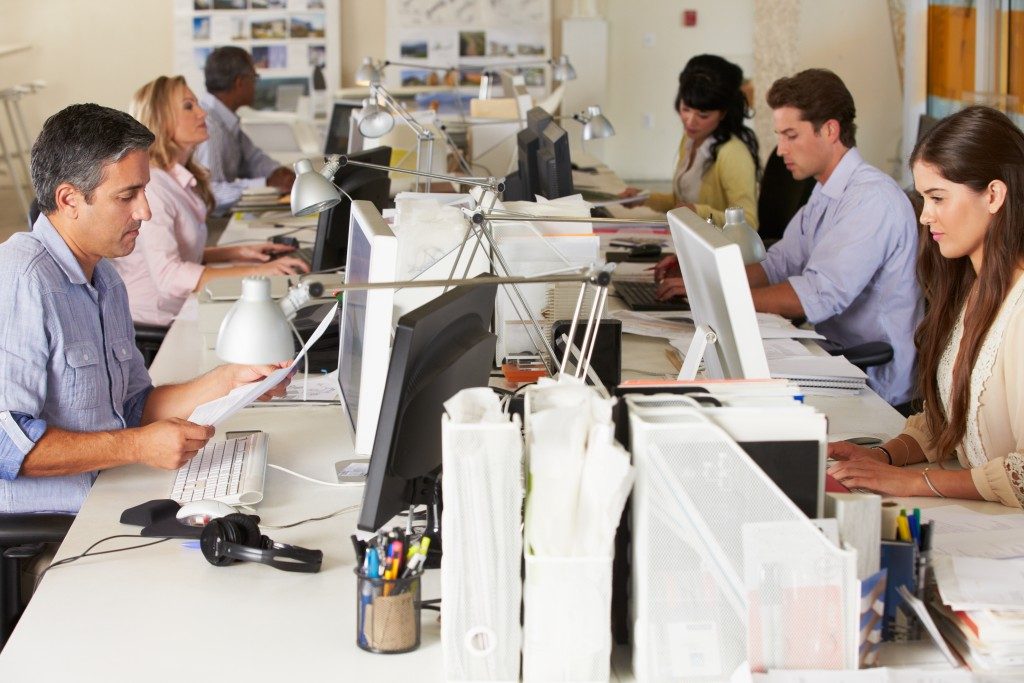People often complain about a lack of resources when trying to improve their lives in some way. But difficult times such as the coronavirus pandemic have shown us that we’re more likely overlooking all that we have at our disposal.
Many of us have learned that we can, in fact, get by with less consumption. We’ve found time to help kids with distance learning while working from home and learning new skills. We optimize idle space, turning storage into home offices and finishing basements to create home gyms and recreational rooms.
Businesses, unlike individual persons, operate on the opposite end of the spectrum. They don’t need a crisis to spur them towards efficiency. In fact, the pursuit of efficiency has been the dominant way of business thinking for decades.
But our recent brush with global disruption has called this paradigm into question.
Fragile efficiency
American businesses haven’t always been so efficient. The antitrust acts of the late 19th and early 20th centuries helped break up monopolies that had taken efficiency to short-term extremes, stifling innovation and creating an unproductive economy.
However, the effectiveness of these interventions began to fade over time. And companies quickly adopted strategies and models like the BCG matrix, lean six sigma, or just-in-time production. Making more with less was just the logical endpoint of the process of maximizing profits and shareholder returns.
Wanting to become more efficient isn’t a bad thing. The problem arises when we forfeit everything else. We don’t see it as an issue when the going is good, but it can throw a wrench in all operations when a shock occurs.
In the past several decades, what business leaders and thinkers have considered ‘waste’ or ‘slack’ are actually valuable forms of resilience. Eliminating them has made companies, and society in general, fragile in the face of a crisis like the pandemic.
Manufacturing hubs shut down, and in some cases, governments interfered in supply chains. You could circumvent those if you had a buffer in your inventory.
But many businesses didn’t have any. They were totally committed to being as efficient as possible, and it was a common downfall.
Their sudden failure in the midst of a global disruption also impacted everyone, as domestic suppliers ran short on face masks and disinfectants. Medical research companies had over-specialized in pharmaceuticals rather than vaccines. On the whole, we weren’t competitive.
Finding redundancy
We could all have been better-prepared for Covid-19. That wouldn’t necessarily involve drawing up elaborate contingency plans and hypotheticals. You can’t really predict in detail how a major crisis might unfold. All we need to do is take a hint from nature.
Biological systems have evolved through natural selection. You’d think that would drive each organism to be as efficient as possible, but observation reveals that’s not true.
Living creatures actually possess a lot of redundancy. Their components are heterogeneous. They are modular, loosely linked to better sustain damage without resulting in fatal outcomes. The same attributes are found as you move higher up and observe entire ecosystems.
Until we face a crisis, those redundancies seem inefficient. The metabolic maintenance cost of two kidneys, for instance, is less than one. And you can certainly survive with a single kidney.
But you’re probably not in a hurry to cut out your spare. There’s a reason we have a backup, and it often isn’t found in the short term.
If a business is to survive future crises, it needs to rediscover the importance of redundancy and be more resilient.
Going circular

The challenge most businesses now face is a balancing act. Incentives to seek efficiency won’t disappear, but neither will the danger of disruption.
This is where adopting a circular economy can help. Using this approach means ditching the traditional “take, make, waste” linear model of production.
It involves designing your operations so that every material and byproduct can be repurposed. That can take place internally, or it can entail partnering with other companies that need those components.
Linear economies only appear efficient because we don’t consider the impacts of waste. Circular economies reintegrate them on purpose.
Holding extra inventory, for instance, won’t be a waste. Products can be shifted in a pinch if necessary. You’ve designed a pathway for them that will return value.
And the circular model is also cited as being future-compatible in terms of sustainability. If you maximize the utility of every resource, you end up taking less from the environment.
In this way, any business can contribute to global stability while achieving a balance of efficiency and resilience.

